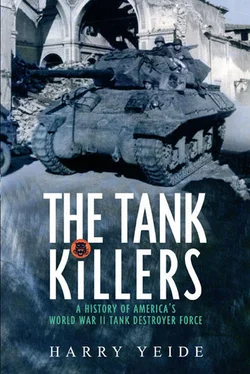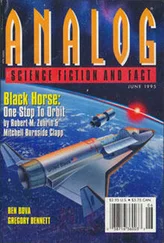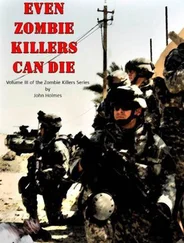The troops were destined to spend twenty-five days aboard the HMS Misoa , HMS Derbyshire , and SS Batery with several thousand other American and British soldiers. The vessels formed part of a convoy that loitered off the Scottish coast for the first two weeks. Evacuation and landing drills filled the long days, the latter involving clambering down the ship’s side on ladders to the waterline in full gear, and back up again. Company C participated in landing exercises, but Company B did not. The men in “Baker,” however, somehow obtained from shore a violin, a guitar, and a ukulele, with which they were able to provide entertainment to themselves and those around them. Finally, on 26 October, the convoy of about sixty ships departed.
On the nearby SS Latita , Capt Michael Paulick commanded Reconnaissance Company of the 601st Tank Destroyer Battalion. His company had separated from the battalion at Tidworth Barracks, an old British cavalry facility that also hosted elements of the 1st Infantry Division, to join the assault force as an asset of II Corps. 2The remainder of the outfit was scheduled to follow in several weeks.
On 2 November, the men learned their fate: Operation Torch, the invasion of North Africa. Commanders received their first battle orders and sheaves of maps and aerial photographs. Morale was high.
The convoy passed the blacked-out mass of Gibraltar at about 2100 hours on 6 November. 3Unbeknownst to the men, LtGen Dwight Eisenhower, overall commander of the Allied invasion force, was inside a tunnel beneath the Rock. Further on, towns glimmered on the shores of Spain to port and Spanish Morocco to starboard—the first lighted towns the men had seen since leaving the United States five months earlier. Before dawn on 8 November, the darkness was broken by the flashes of naval gunfire off Oran, Algeria. The transports dropped anchor off St. Leu.
“At that time,” recorded the 701st’s Company B diary, “we were ready for combat.”
* * *
Perhaps.
Captain G. V. Nicholls, a British tank officer and combat veteran who visited the 2d Armored Division before Torch, noted a supreme overconfidence among American troops of all ranks—an observation that he probably could have offered regarding the men of the 601st and 701st Tank Destroyer battalions, as well. The Americans, he recorded, believed that continuous maneuvers had made them ready for active service and that their individual training was up to British and German standards. “In this opinion they were entirely wrong,” he concluded. 4
Indeed, American confidence was high. The old warhorse Lesley McNair was one of the few to sound a cautious note. Responding after the Carolina maneuvers to the oft-asked question from reporters as to the battle readiness of the troops, McNair said, “It is my judgment that, given complete equipment, they certainly could fight effectively. But it is to be added with emphasis that the losses would be unduly heavy, and the results of action against an adversary such as the Germans might not be all that could be desired.” 5
Fortunately, the first foe was not German.
* * *
Combat Command B, 1st Armored Division, formed part of Center Task Force, which had as its objective the capture of Oran and important nearby airfields. Second Corps, under the command of MajGen Lloyd Fredendall, controlled the ground element of the task force, which also included the 1st Infantry Division and parts of the 34th Infantry Division. This force was all that could be brought to bear from bases in the United Kingdom because of shipping constraints. Further east, an American-British task force landed at Algiers, while to the west, MajGen George Patton Jr. commanded American troops coming ashore in Morocco. 6The Allied objective was to push 350 miles and more eastward after the landings to seize Tunisia, thereby threatening Generalfeldmarshall Erwin Rommel’s rear and providing air bases from which to establish air superiority over the central Mediterranean. Some elements would remain behind in Morocco to encourage Spain to remain neutral, which was crucial to protecting Allied supply lines.
The Vichy French colonial forces defending Algeria and Morocco had some 125,000 men—including fourteen poorly equipped but trained and professionally led divisions—and five hundred combat aircraft at their disposal. French mechanized cavalry units in Algeria fielded 110 obsolete tanks and 60 armored cars. 7Eisenhower believed that these forces were sufficient to thwart the invasion if they offered more than token resistance, and he oversaw a clandestine diplomatic effort to ensure that this did not transpire. The outcome of that bid remained uncertain as of D-day, however, and seven weeks before the invasion Eisenhower informed Washington that “the chances of effecting initial landings are better than even”—hardly an assertion of confidence! 8
Few of the American troops probably had any idea that they were embarking on an operation that senior American commanders had opposed. Chief of Staff George Marshall had objected that an invasion of North Africa would delay the planned landings in France. The British, however, were keen on the idea, in part to ease pressure on their forces in Libya and Egypt, which were suffering a drubbing at the hands of the Desert Fox, Erwin Rommel, and his Afrika Korps. President Roosevelt came down on the side of the British to ensure that American ground forces would engage Germany before the end of 1942 and meet his commitment to Josef Stalin to open a second front. In the event, British LtGen Bernard Montgomery launched his famous offensive at El Alamein on 23 October, two weeks before the Allied landings.
Operation Torch was a hurriedly organized affair. American and British political and military leaders did not reach agreement to pursue the project until late July 1942, and substantial differences between the Allies over where the landings should occur continued through August. Eisenhower was named overall commander on 26 July, leaving him a mere three months to pull together the until-then largest amphibious operation in American history. 9Torch required a complete reorientation for staffs that had been working on the plans for landings in France. Improvisation was the imperative as they scrambled to train troops and supply the necessary sea-lift capacity amidst heavy shipping losses to German U-boats. 10The tools of later amphibious operations, such as Landing Ships, Tanks (LSTs), were not yet at hand. Amphibious training for the naval and ground forces was inadequate, a fact recognized by commanders but deemed an acceptable risk.
* * *
Oran is situated in the middle of three bays that form a large bight between Cape Falcon on the west and Pointe de l’Aiguille to the east. Arzew, a secondary port, lies 20 miles farther east on the shore of a hilly and wide promontory. Hill masses behind the shoreline offered defenders advantageous terrain and channeled movement. The French defenses boasted forty-five fortified coastal guns at Oran and another six at Arzew. The Oran Division had nearly 17,000 men to defend the approaches to the city. 11

The invasion plan called for simultaneous landings at three major beaches—labeled Beaches X, Y, and Z—and one minor beach. One armored task force, designated Green and including the men of Company C, 701st Tank Destroyer Battalion, would land at Mersa bou Zedjar. A second, designated Red and including Company B, 701st Tank Destroyer Battalion, would land near Arzew, where the reconnaissance troops of the 601st Tank Destroyer Battalion would also come ashore. “Flying columns” from the assault force were to push inland in a double-envelopment maneuver and initially seize airfields and approaches to Oran while other units captured shore batteries. Airborne troops flying all the way from England were to drop at two crucial airstrips, La Sénia and Tafaraoui, and link up with armored columns advancing from the beaches. The French Army airfield at La Sénia lay about six miles south-southeast of Oran, while the Navy airfield at Tafaraoui was located twelve miles southeast of the city. 12
Читать дальше








